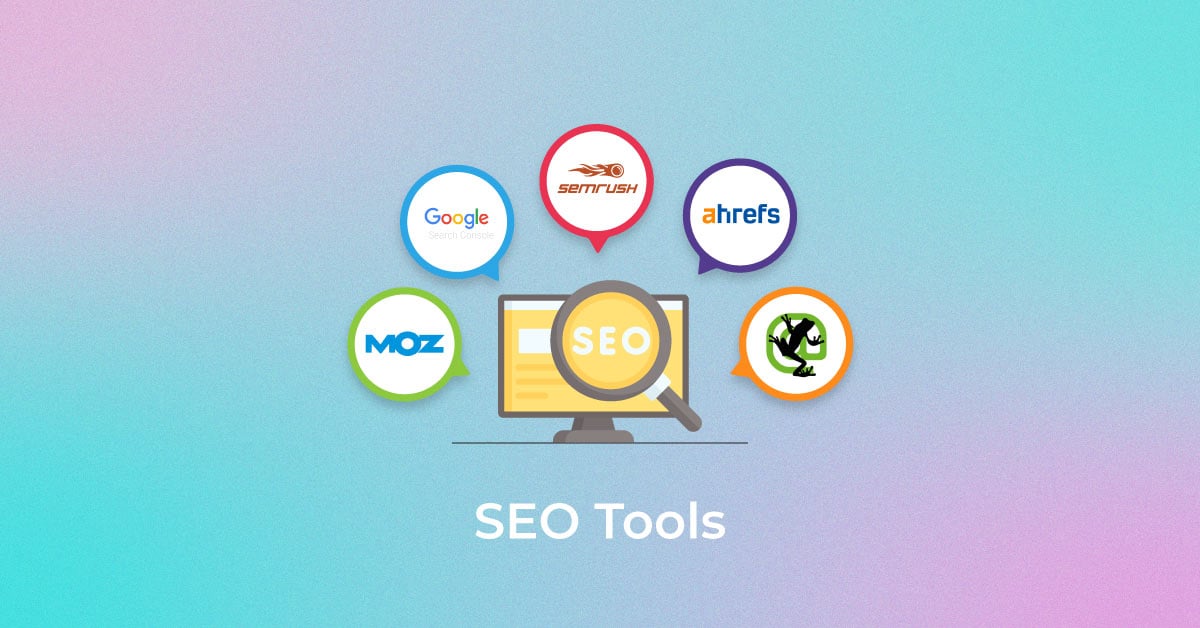Understanding Ecommerce Keyword Research
What Is Ecommerce Keyword Research?
Ecommerce keyword research is a strategic process that businesses undertake to understand which specific terms and phrases potential customers enter into search engines while looking for products or services. This critical step in SEO (Search Engine Optimization) is an integral part of e-commerce SEO services, allowing you to tailor your product listings, descriptions, and overall e-commerce content to align with consumer behavior.
By embedding these keywords into your website, you position your brand to appear more prominently in online search results, thereby increasing visibility and driving sales. Partnering with professional e-commerce SEO services ensures that your keyword strategy is both effective and results-driven, optimizing your online presence for maximum impact.
Why Is Keyword Research Important for Ecommerce?
Keyword research is crucial for ecommerce as it connects the products offered with potential customers seeking them. By identifying relevant keywords, businesses increase their visibility in search results, leading to higher traffic and conversions that drive revenue.
Additionally, keyword research offers insights into market trends and consumer demand, allowing businesses to adjust their inventory and marketing strategies effectively. Understanding the search behavior of the audience helps create targeted content that addresses their questions and guides them toward making a purchase. Overall, thorough keyword research is foundational for effective customer-centric marketing in the digital landscape.
Types of Keywords for Ecommerce Success
Short-Tail vs. Long-Tail Keywords
Short-tail keywords, often referred to as “head terms,” are broad, generic keywords composed of one to two words, such as “shoes” or “books.” These terms have high search volumes due to their broad nature, resulting in intense competition and posing a challenge for smaller e-commerce retailers to rank highly in search engine results.
Conversely, long-tail keywords contain three or more words, such as “men’s waterproof hiking boots.” They are more specific, targeting niche audiences who are further along in the buying process. While the search volume for long-tail keywords is typically lower, they offer higher conversion rates because they align closer to the searcher’s intent. Long-tail keywords, by being specific, are less competitive and thus provide a more attainable opportunity for ecommerce sites to rank and reach an audience ready to purchase.
Product Page Keywords vs. Blog Keywords
Understanding the distinction between product page keywords and blog keywords is essential for an effective e-commerce SEO strategy. Product page keywords focus on specificity and match users’ search intent when they are near a purchase decision, such as “buy organic bamboo sheets” or “Samsung Galaxy S23 best price.”
In contrast, blog keywords target users seeking information or answers, like “benefits of OLED TVs” or “latest smartphone trends 2025.” The objective of blog keywords is to provide value, build authority, and guide users through the buyer’s journey without directly pushing for a sale.
In summary, product page keywords aim to convert visitors by aligning with actual products, while blog keywords attract and educate potential customers until they’re ready to buy.
Navigational, Informational, and Transactional Keywords
Navigational, informational, and transactional keywords reflect different user intents that ecommerce sites must address to engage a diverse audience throughout the buyer’s journey.
- Navigational keywords are used by users who know where they want to go, such as “Nike official store.” While these are brand-specific and may attract fewer new customers, ranking for them is essential for brand recognition.
- Informational keywords cater to users seeking answers or guidance, like “how to clean suede shoes.” Targeting these keywords with educational content can help draw traffic and build brand trust.
- Transactional keywords indicate a readiness to purchase, as seen in searches like “discount codes for yoga mats.” Capturing these keywords is vital for driving sales.
By balancing navigational, informational, and transactional keywords, ecommerce sites can effectively meet potential customers’ needs at various stages of the sales funnel.
Key Metrics to Consider in Keyword Research
Search Volume and Trends
When conducting keyword research for ecommerce, it’s vital to consider search volume and trends. Search volume reflects the average monthly searches for a keyword, indicating its potential to drive traffic. High-volume keywords can attract a larger audience, but they often come with stiff competition.
To achieve a balanced strategy, it’s important to include keywords with moderate to low search volumes, as they may attract more targeted and potentially higher-converting traffic.
Additionally, analyzing trends over time is essential, as seasonal fluctuations and changing customer behaviors can impact keyword popularity. By tracking these trends, you can capitalize on rising keywords before they become competitive and align your content with seasonal peaks for maximum impact.
Keyword Difficulty (Competition)
Keyword difficulty, also known as competition, is a key metric that indicates the challenges of ranking for a specific keyword. A higher difficulty score suggests that established, high-authority sites dominate the search results, making it more challenging for newer or smaller ecommerce sites to compete.
By evaluating keyword difficulty, businesses can prioritize their efforts effectively. For example, newer ecommerce business website may choose to target less competitive keywords to gain traction before attempting to rank for more challenging ones.
SEO tools like Ahrefs or SEMrush provide insights by analyzing the domain strength of top-ranking pages for a keyword, helping to estimate the effort needed to outrank them. An effective strategy typically includes a mix of keywords with varying difficulty levels, aligning the website’s capabilities with the competition they are prepared to face.
Search Intent and Relevance
Search intent and relevance are vital in keyword research, focusing on the underlying reasons behind a search query—whether navigational, informational, or transactional. Understanding intent ensures that search results meet user expectations; mismatched content can lead to higher bounce rates and lost conversions.
Relevance measures how well your content aligns with a search query. It’s not just about using the right keywords; your content must genuinely address the user’s needs. For example, someone searching for “best smartphones under $500” expects a list or comparison, not just a single product page.
By optimizing for both search intent and relevance, you enhance user satisfaction and improve your chances of ranking well in search engine results, leading to more qualified traffic and better engagement.
Commercial Value of Keywords
The commercial value of keywords reflects their ability to drive profitable customer actions, especially in ecommerce. Not all keywords have the same potential to convert searchers into buyers, so prioritizing those with higher commercial value is crucial.
To assess a keyword’s commercial value, consider metrics like cost-per-click (CPC) in paid advertising, as higher CPC often indicates strong commercial intent. Additionally, the presence of product ads in search results can signal that a keyword is transaction-oriented and linked to direct sales.
Focusing on keywords with high commercial value enables you to create content that targets users ready to make purchases, optimizing your ecommerce site for sales rather than just traffic.
Step-by-Step Guide to Ecommerce SEO Keywords Research
Step 1: Brainstorm Seed Keywords
Initiating your e-commerce keyword research begins with brainstorming seed keywords. Seed keywords are the foundational terms related to your products or services, representing your business’s core offerings. For example, if you sell handmade soaps, your seed keywords could include “handmade soaps,” “organic soaps,” and “artisan soap bars.”
Start by considering your product categories, brand terms, and the features of your products. The idea is to come up with keywords that people are likely to use when searching for what you have to offer. These seed keywords will serve as the starting point for expanding into more extensive keyword research and discovering longer, more specific phrases that prospects might search for.
Step 2: Expand Your List with Related Keywords
Once you’ve established your seed keywords, the next step is to expand your list with related keywords. These are variations or extensions of your seed keywords that capture a broader range of potential customer searches. A simple method to find related keywords is using tools like Google’s “People also ask” or “Searches related to” sections, which provide insight into alternative queries.
Another approach is to utilize keyword research tools that suggest semantically related terms, synonyms, or questions that searchers might use. This can include keyword modifiers such as colors, sizes, geographical locations, or usage contexts, which will all refine and tailor your keyword list to target more specific customer segments.
By extending your keyword list, you’re not only covering a wider spectrum of search queries but also uncovering niche segments you can target to attract and convert customers more effectively.
Step 3: Filter by Search Intent, Volume, and Difficulty
Maximize your expanded keyword list by filtering it based on search intent, volume, and difficulty to target the best opportunities for your ecommerce strategy.
- Start with search intent to ensure keywords align with your content type—whether for product pages or informational blogs. Use intent filters in keyword research tools to focus on commercial or informational intent as needed.
- Next, filter by volume. Set a keyword difficulty limit below 20% for new sites, and sort by search volume in descending order to highlight keywords with sufficient monthly searches.
- Finally, use the keyword difficulty filter to identify keywords you can realistically rank for, ensuring a balance between attainability and traffic potential.
This process will yield a refined list of keywords that match your ranking capabilities and traffic goals.
Step 4: Conduct Competitor Keyword Analysis
Competitor keyword analysis enables you to peek into your rivals’ playbook to understand the search terms driving traffic to their sites. This insight helps identify opportunities you may have missed and refine your keyword strategy to compete more effectively.
To kick-start this process, employ a keyword tool to conduct organic research on your competitor’s website –
- Navigate to the “Organic Research” section of your chosen tool.
- Enter your competitor’s URL and select your target country to tailor the results.
- Investigate the “Positions” tab to see which keywords are successfully driving traffic to your competitor.
Filter results by keyword difficulty, intent, and search volume to find terms that align with your products. Focus on low-difficulty, high-volume keywords for quick wins.
Check the “Competitors” tab to discover other websites competing for the same keywords, offering additional keyword discovery opportunities and insights into the competitive landscape. Add relevant keywords to your list, as this intel is vital for building a strong SEO campaign that targets top rankings.
Step 5: Create Keyword Clusters for Target Pages
Developing keyword clusters involves grouping related keywords to create relevant and comprehensive content. This strategy is essential for ecommerce, as it optimizes pages for multiple terms, enhancing visibility in search results.
To create effective keyword clusters:
- Identify core themes related to your products.
- Group complementary keywords, such as “thick yoga mats” and “extra thick yoga mats.”
- Use tools like SEMrush’s Keyword Strategy Builder to streamline the process.
Keyword clusters enhance content on product pages and blog posts, improving search engine recognition and user experience. This approach establishes your ecommerce site as an authority in specific topics, boosting organic rankings and customer trust.
Step 6: Identify Keywords for Different Content Types
Identifying keywords for various content types helps your ecommerce website provide a diverse mix of product descriptions, blog articles, and buyer guides, engaging users at different stages of their shopping journey.
To achieve this:
- Categorize Keywords: Review your refined keyword list and assign them to suitable content types, such as using “best yoga mats for beginners” for a buyer’s guide and “eco-friendly yoga mat price” for a product page.
- Use a Topic Map: If available, consult your topic map to visualize keyword alignment with specific pages.
- Analyze SERPs: Investigate search engine results for your chosen keywords to see which content types rank highest, gaining insights into relevance.
- Create a Content Plan: Develop a content calendar to strategically schedule keyword targeting across your site.
By aligning the right keywords with the appropriate content types, you enhance your SEO strategy and improve user experience, leading to greater engagement and conversions.
Tools to Help You Find the Best Ecommerce Keywords
Ahrefs for Keyword Research and Competitor Analysis
Ahrefs is a powerful tool for keyword research and competitor analysis, crucial for enhancing your ecommerce SEO strategy. Its Keywords Explorer provides insights into keyword difficulty, search volume, and metrics like clicks per search, helping you select effective keywords.
The Site Explorer feature allows you to analyze competitors by revealing their ranking keywords, top pages, and backlink structures. This information helps refine your strategy and uncover opportunities.
To maximize Ahrefs:
- Monitor Rankings: Regularly check your keyword positions.
- Analyze Backlinks: Identify link-building opportunities.
- Use Content Gap: Find keywords your competitors rank for that you don’t.
These tactics can significantly boost your ecommerce SEO efforts.
SEMrush for Comprehensive SEO Insights
SEMrush is a leading SEO tool for insights, offering robust features for keyword research and competitor analysis. Its Keyword Magic Tool allows you to generate long-tail keywords from a seed keyword, providing vital data like search volume, trends, difficulty, and CPC estimates.
For competitive intelligence, SEMrush enables in-depth analysis of competitors’ domains, tracking their organic rankings, paid campaigns, and backlink strategies. This information helps refine your own SEO tactics.
To maximize SEMrush:
- Use Keyword Overview: Gain quick insights into keyword performance.
- Analyze Competitors: Understand the strategies of top competitors.
- Leverage Keyword Gap: Identify keywords your competitors rank for that you don’t.
With SEMrush, optimizing your content becomes a more effective, data-driven process.
Google Keyword Planner for Search Volume Data
Google Keyword Planner is a valuable tool for ecommerce entrepreneurs seeking reliable search volume data. It helps identify relevant keywords for your business, providing insights like average monthly search volumes, competition levels, and trends crucial for keyword targeting.
Originally designed for Google Ads, it is also effective for organic keyword research strategy. Start with a seed keyword, and Keyword Planner generates related keywords along with historical metrics.
To use Keyword Planner:
- Access it through your Google Ads account under “Tools & Settings.”
- Enter your seed keywords to generate new ideas.
- Review search volume trends to align keywords with user interest.
While primarily free, more detailed insights may require a Google Ads campaign. Overall, Keyword Planner is essential for refining your keyword strategy with data from Google.
Keywords Everywhere for Real-Time Keyword Suggestions
Keywords Everywhere is a browser extension that transforms online searches into SEO research opportunities by providing real-time keyword suggestions and analytics. It displays key metrics like search volume, CPC, competition, and trends directly in your browser, making it easier to find profitable ecommerce keywords.
This user-friendly tool streamlines keyword discovery while you browse products, niches, or industry terms. Key ways to use Keywords Everywhere include:
- Analyzing autocomplete suggestions on platforms like Google and Amazon for high-intent keywords.
- Exploring “People Also Search For” data to generate new keyword ideas.
- Monitoring keyword trend charts to identify timely opportunities.
It’s especially beneficial for ecommerce professionals seeking an ongoing, integrated approach to keyword research rather than sporadic deep dives.
Google Search Console for Site-Specific Performance
Google Search Console is essential for ecommerce websites seeking to track performance and understand user interactions via Google search. It helps identify which keywords your site ranks for, enabling you to assess the effectiveness of your SEO strategy and make informed improvements.
The ‘Performance’ tab is particularly valuable, showing the search queries driving traffic, top-performing pages, and SERP rankings. It also alerts you to technical issues like crawl errors or mobile usability problems.
Key uses of Google Search Console include:
- Monitoring successful keywords and pages to guide optimization efforts.
- Detecting and resolving website errors quickly to enhance user experience and search engine friendliness.
- Analyzing your backlink profile to improve the domain authority.
Incorporating Google Search Console into your ecommerce strategy provides a comprehensive view of your Google performance, helping you optimize your content marketing and gain a competitive edge.
Optimizing Your Content Strategy Using Keywords
Creating Content That Matches User Intent
Creating content that aligns with user intent is essential for ecommerce success. Understand the three types of user intent: informational, navigational, and transactional, and craft content accordingly.
- For informational intent, develop blog posts and guides that answer common questions.
- For navigational intent, optimize product pages and category pages for easy navigation.
- For transactional intent, include strong calls-to-action in product descriptions and landing pages to encourage purchases.
By matching your content with user intent, you enhance user satisfaction and signal to search engines that your site provides valuable information, improving organic rankings, driving targeted traffic, and increasing conversions.
Mapping Keywords to Product Pages and Blog Content
Mapping keywords to product pages and blog content is essential for aligning your ecommerce site’s content with SEO goals. Start by segmenting keywords based on intent and relevance. Assign transactional keywords to product pages to drive conversions, while using informational keywords for blog posts that educate and engage potential customers.
Organize your keywords and corresponding pages in a matrix or spreadsheet, and regularly update it as you add new content. This strategic keyword mapping optimizes your site structure and targets specific audiences, enhancing search rankings and attracting qualified traffic.
Building a Content Calendar for Consistent SEO
Creating a content calendar is essential for maintaining consistency in your SEO strategy. It outlines a timeline for producing, optimizing, and publishing content, ensuring your ecommerce site targets a diverse range of keywords and leverages seasonal trends.
To build a content calendar, determine your publication frequency based on resources and industry competitiveness. Align content types with key dates, such as product launches or holidays, and assign tasks with clear deadlines for keyword research and content creation.
A well-structured content calendar streamlines your content process and aligns with your overall marketing strategy, helping you meet your SEO goals.
FAQs About Ecommerce Keyword Research
How Do You Conduct Keyword Research for Ecommerce?
Conduct keyword research for ecommerce by starting with seed keywords that reflect your products or services. Expand your list using tools like Google Keyword Planner, Ahrefs, or SEMrush for related terms and long-tail keywords. Filter keywords by search intent, volume, and difficulty, and analyze competitors to identify gaps and opportunities. Create keyword clusters for specific pages or content types, and refine your strategy with ongoing analysis and updates.
What Are the Best Tools for Ecommerce Keywords?
The best tools for ecommerce keyword research include Google Keyword Planner for foundational search volume data, Ahrefs and SEMrush for in-depth keyword analysis and competitive insights, Ubersuggest for quickly identifying keyword ideas, and Keywords Everywhere for real-time search data. These tools help you discover, analyze, and select the most effective keywords for your ecommerce website.
How Often Should You Update Your Keyword Research?
Update your keyword research at least once per quarter or whenever you introduce new products or content. Staying current with market trends and customer behavior is crucial, as it directly influences the effectiveness of your keywords and overall SEO strategy.
Popular Searches
How useful was this post?
0 / 5. 0















